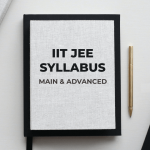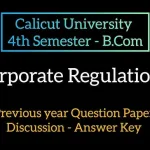MSBTE model answer papers are crucial for students to prepare effectively for their exams. These answer papers provide detailed solutions to previous year’s exam questions, allowing students to understand the pattern, format, and the depth of answers expected in MSBTE exams.
MSBTE Mechanical Engineering Questions and Answers
Question What is the difference between orthogonal and oblique cutting?
Answer Orthogonal cutting refers to cutting where the cutting edge is perpendicular to the direction of the cut, while oblique cutting has the cutting edge inclined.
Question Define thermodynamics and its types of systems.
Answer Thermodynamics is the study of energy and its transformations. The systems are closed, open, and isolated systems.
Question What is the First Law of Thermodynamics?
Answer The First Law of Thermodynamics states that energy cannot be created or destroyed, only transformed from one form to another.
Question Describe Carnot Cycle.
Answer Carnot Cycle is an idealized thermodynamic cycle that shows the maximum possible efficiency of a heat engine.
Question Explain the working of a four-stroke engine.
Answer A four-stroke engine operates through four cycles: intake, compression, power, and exhaust, which completes one engine cycle.
Question What is specific heat?
Answer Specific heat is the amount of heat per unit mass required to raise the temperature of a substance by one degree Celsius.
Question Define internal energy.
Answer Internal energy is the total energy contained within a system, resulting from the kinetic and potential energies of molecules.
Question Explain the process of heat transfer by conduction.
Answer Conduction is the transfer of heat through a solid material, from high to low temperature areas.
Question What is tensile strength?
Answer Tensile strength is the resistance of a material to breaking under tension.
Question What is the difference between stress and strain?
Answer Stress is the internal force per unit area, while strain is the deformation caused by stress.
Question What is a stress-strain curve?
Answer A stress-strain curve shows the relationship between the applied stress and the resulting strain of a material.
Question What is Hooke’s Law?
Answer Hooke’s Law states that the strain in a solid is proportional to the applied stress within the elastic limit of that material.
Question What is fatigue in materials?
Answer Fatigue is the weakening of a material caused by repeatedly applied loads over time.
Question Explain the principle of refrigeration.
Answer Refrigeration works by removing heat from a space to lower its temperature, usually through a cycle involving a refrigerant.
Question What is the difference between heat and temperature?
Answer Heat is a form of energy transfer, while temperature measures the thermal energy of a system.
Question What is entropy?
Answer Entropy is the measure of disorder or randomness in a system, associated with the number of possible microscopic configurations.
Question What is the Second Law of Thermodynamics?
Answer The Second Law states that the entropy of an isolated system always increases over time.
Question What is Pascal’s Law?
Answer Pascal’s Law states that a pressure change applied to a confined fluid is transmitted undiminished throughout the fluid.
Question Define the term viscosity.
Answer Viscosity is the measure of a fluid’s resistance to flow or deformation.
MSBTE Electrical Engineering Questions and Answers
Question What is Ohm’s Law?
Answer Ohm’s Law states that the current through a conductor between two points is directly proportional to the voltage across the two points.
Question Explain the difference between AC and DC current.
Answer AC current alternates direction periodically, while DC current flows in one direction.
Question What is a transformer?
Answer A transformer is a device that transfers electrical energy between two or more circuits through electromagnetic induction.
Question What is Kirchhoff’s Current Law (KCL)?
Answer KCL states that the total current entering a junction is equal to the total current leaving the junction.
Question What is Kirchhoff’s Voltage Law (KVL)?
Answer KVL states that the sum of all voltages around any closed loop in a circuit is equal to zero.
Question Define the power factor.
Answer Power factor is the ratio of the real power used in a circuit to the apparent power supplied to the circuit.
Question What is a rectifier?
Answer A rectifier is an electrical device that converts alternating current (AC) to direct current (DC).
Question What is electromagnetic induction?
Answer Electromagnetic induction is the process of generating electric current with a magnetic field.
Question What is the difference between series and parallel circuits?
Answer In series circuits, components are connected end-to-end, while in parallel circuits, components are connected across the same voltage points.
Question Define a semiconductor.
Answer A semiconductor is a material with electrical conductivity between that of a conductor and an insulator.
Question What is the function of a diode?
Answer A diode allows current to flow in one direction while blocking current in the opposite direction.
Question Explain the working principle of a DC motor.
Answer A DC motor works on the principle of converting electrical energy into mechanical energy using the force produced by magnetic fields.
Question What is a capacitor?
Answer A capacitor is a two-terminal electrical component that stores energy electrostatically in an electric field.
Question What is a relay?
Answer A relay is an electrically operated switch used to control a high-power circuit with a low-power signal.
Question What is a three-phase system?
Answer A three-phase system is a type of polyphase system used to distribute alternating current (AC) electricity in power grids.
Question Explain the working principle of an alternator.
Answer An alternator works by converting mechanical energy into electrical energy using electromagnetic induction.
Question What is an inductor?
Answer An inductor is a passive electrical component that stores energy in a magnetic field when electrical current flows through it.
Question What is an electric circuit?
Answer An electric circuit is a path in which electrons from a voltage or current source flow.
Question Define impedance.
Answer Impedance is the total opposition a circuit offers to the flow of alternating current (AC), consisting of resistance and reactance.
MSBTE Computer Engineering Questions and Answers
Question What is an operating system?
Answer An operating system is software that manages computer hardware and provides services for computer programs.
Question What is the difference between a compiler and an interpreter?
Answer A compiler translates an entire program into machine code, while an interpreter translates and executes code line by line.
Question What is a database management system (DBMS)?
Answer A DBMS is software that manages databases, allowing users to store, retrieve, update, and manage data efficiently.
Question What is object-oriented programming (OOP)?
Answer OOP is a programming paradigm based on the concept of “objects”, which contain data and methods to manipulate that data.
Question Explain the concept of polymorphism in OOP.
Answer Polymorphism is the ability of different objects to respond to the same function in different ways.
Question What is an algorithm?
Answer An algorithm is a step-by-step procedure to solve a specific problem.
Question What is the difference between stack and queue?
Answer A stack follows the Last In First Out (LIFO) principle, while a queue follows the First In First Out (FIFO) principle.
Question What is recursion?
Answer Recursion is a programming technique where a function calls itself to solve a problem.
Question Define inheritance in OOP.
Answer Inheritance is a mechanism in OOP where a new class inherits properties and behaviors from an existing class.
Question What is cloud computing?
Answer Cloud computing is the delivery of computing services over the internet, allowing users to access and store data remotely.
Question Explain the difference between HTTP and HTTPS.
Answer HTTP is the protocol used for transferring web pages, while HTTPS adds security with encryption.
Question What is artificial intelligence (AI)?
Answer AI is the simulation of human intelligence in machines designed to think, learn, and solve problems.
Question Define data structure.
Answer A data structure is a way of organizing and storing data so that it can be accessed and modified efficiently.
Question What is big data?
Answer Big data refers to large and complex data sets that traditional data-processing software cannot handle effectively.
Question What is machine learning?
Answer Machine learning is a subset of AI that involves the use of algorithms to learn from data and make predictions or decisions.
Question What is a network topology?
Answer A network topology refers to the layout pattern of interconnected devices in a network.
Question What is cybersecurity?
Answer Cybersecurity is the practice of protecting systems, networks, and data from digital attacks.
Question What is software engineering?
Answer Software engineering is the systematic approach to the design, development, testing, and maintenance of software applications.
MSBTE model answer papers help students familiarize themselves with the format, structure, and types of questions they may encounter in exams. Studying these questions and answers from various subjects provides a clear understanding of concepts, which is crucial for exam preparation.
Latest Posts
- Step-by-step guide to download and apply for jee mains admit card 202
- Comprehensive 2025 government holidays and recruitment details for job seekers
- JEE Mains Admit Card 2025: Your Step-by-Step Guide to Downloading the Hall Ticket
- Everything You Need to Know About 2025 Government Holidays Recruitment
- Comprehensive Guide to rrb d group recruitment 2025 – Eligibility, Vacancies, and Application
- Detailed guide to nps trust recruitment 2025 vacancies, eligibility and apply process
- Comprehensive guide to hpcl recruitment 2025 notification, vacancies, and application process
- ignou bed admission 2025 complete recruitment guide with eligibility and process
- Comprehensive Guide to Indian Army Agniveer Recruitment 2025 Notification and Jobs
- Everything You Must Know About CBSE Board Exams 2025 Changes & New Rules




